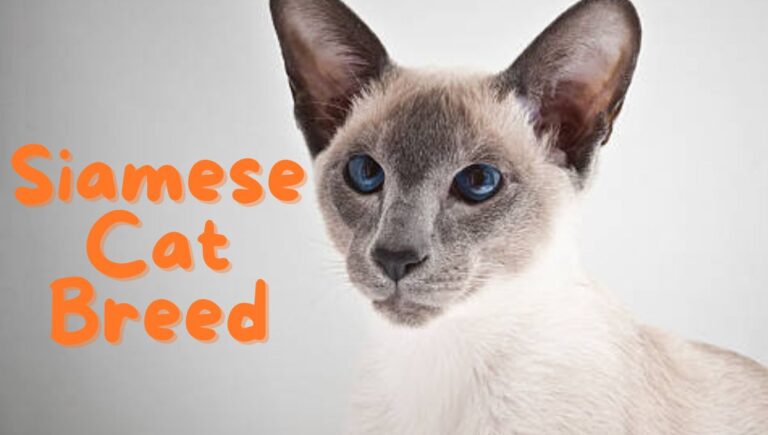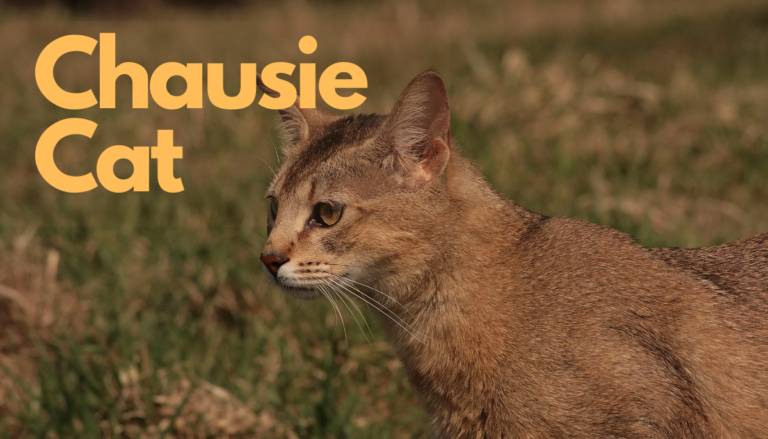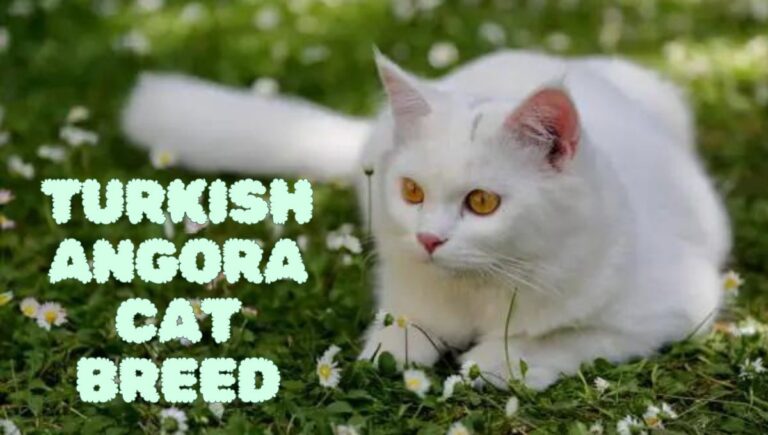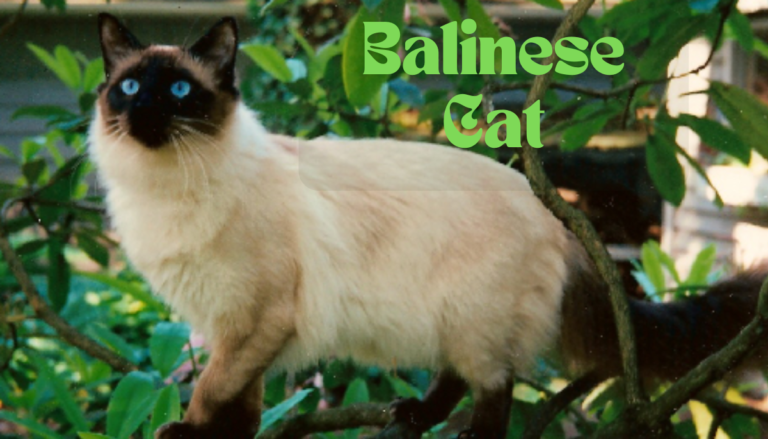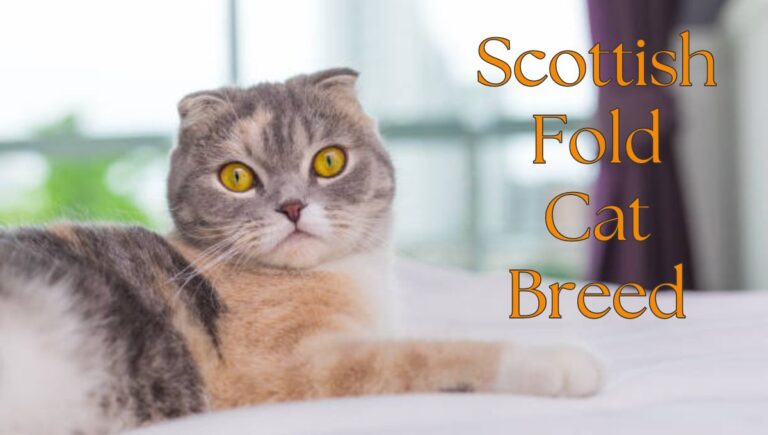Savannah Cat Breed
The Savannah cat is a captivating hybrid breed that emerged in the late 20th century. It results from crossing a wild African serval (Leptailurus serval) with a domestic cat (Felis catus). This unique blend produces strikingly beautiful and distinctive feline companions.
A. Key Characteristics:
Large Ears: One of the most remarkable features of the Savannah cat is its large, erect ears. These ears give it an exotic and wild appearance, reminiscent of its serval ancestry.
Spotted Coat: Savannahs inherit the serval’s brown-spotted coats, which set them apart from other domestic cats. These markings add to their allure.
Tall and Lean Build: The Savannah’s tall and slim build creates an illusion of greater size than their actual weight. Early-generation (F1 and F2) Savannahs can be quite substantial due to the strong genetic influence of the serval ancestor. Some are even as large as dogs!
Long Legs and Hooded Eyes: Their long legs and hooded eyes contribute to their exotic appearance, evoking the spirit of the African savannah.
Table of Contents
II. Origin and History of the Savannah Cat Breed
The Savannah cat is a captivating feline that combines the wild allure of the African serval with the domestic charm of a house cat. Let’s delve into the fascinating history of this unique breed.
A. The Birth of the Savannah:

- The Savannah cat breed was born in the 1980s through a remarkable crossbreeding experiment. Breeders aimed to create a cat that resembled the serval (Leptailurus serval) but possessed fully domestic habits.
- The first Savannah cat came into existence in 1986 when Judee Frank, a breeder, witnessed an unexpected event. Her Siamese cat gave birth to a kitten, sired by a serval named Ernie. This miraculous kitten was named Miracle.
- As the possession of Miracle changed hands, her name transformed to Savannah, marking the beginning of the breed with the same moniker.
B. Suzi Mutascio and the F2 Generation:
- In 1989, Suzi Mutascio played a crucial role in advancing the Savannah breed. Savannah, now a grown cat, was pregnant. Suzi bred her with a Turkish Angora named Albert II.
- The Turkish Angora, a tall and lanky white cat, added an intriguing genetic mix to the lineage. White cats are like canvases, their true colors revealed only when they mate with other cats.
- On April 5, 1989, Savannah gave birth to three kittens. Among them, two F2 (second-generation) kittens survived. The male was solid white, while the female was a torbie (a tabby cat with orangish hues).
- Interestingly, the stillborn kitten from this litter closely resembled a serval, emphasizing the wild influence in early-generation Savannahs.
C. Servals and Domestic Cats: The Genetic Blend:
- The Savannah cat’s origins lie in the crossbreeding of domestic cats with African servals. Servals are non-domestic cats native to the Savannah region of Africa.
- Key characteristics inherited from servals include:
- Large Ears: Savannahs boast the serval’s distinctive large, erect ears.
- Spotted Coats: Their brown-spotted coats evoke the wild beauty of their serval ancestors.
- Tall and Lean Build: Long legs and a slim physique contribute to their exotic appearance.
- Hooded Eyes: Savannahs’ hooded eyes add to their mysterious allure.
- Geographically, the Savannah cat’s roots trace back to the African savannah, where servals roam free. This environment has left an indelible mark on their physical traits and behavior.
- Legends and folklore surrounding the Savannah’s development add to its mystique, making it a breed that captures both the wild and the domestic in a single package.
III. Physical Characteristics of breed
| Characteristic | Information |
|---|---|
| Height | Varies (typically 8-17 inches at the shoulder) |
| Weight | Varies (5-25 pounds) |
| Life Span | 12-20 years |
| Good with | Families, other pets |
| Temperament | Active, playful, curious, social |
| Intelligence | Highly intelligent |
| Shedding Amount | Moderate |
| Grooming | Regular brushing to maintain coat |
| Exercise Needs | High (requires mental and physical stimulation) |
| Energy Level | Very high |
| Drool Amount | Low |
| Coat Length/Texture | Short to medium, soft and dense |
| Colors | Brown, silver, black, smoke, and more |
| Patterns | Spotted, marbled, or combination of both |
B.Specifics of the Savannah cat regarding size, coat type, color variations, and other relevant details
1. Size and Measurements:
- Height: Savannah cats vary in height, typically ranging from 8 to 17 inches at the shoulder.
- Weight:
- Males: Male Savannahs can weigh anywhere between 12 to 25 pounds.
- Females: Female Savannahs are generally lighter, weighing around 8 to 15 pounds.
2. Coat Type and Texture:
- The Savannah cat’s coat is short to medium in length.
- Texture: Their fur is soft and dense, providing a luxurious feel when touched.
3. Color Variations:
Savannah cats come in various captivating colors and patterns. Here are some common ones:
- Brown Spotted (Classic Savannah):
- The classic Savannah coat features a golden or tan background with dark brown or black spots.
- These spots can be large or small, creating a striking contrast against the base color.
- Silver Spotted:
- Silver Savannahs have a pale silver or gray background with dark gray or black spots.
- The silver hue adds an elegant touch to their appearance.
- Black Smoke:
- Black smoke Savannahs exhibit a unique color pattern.
- Their fur appears black at the base, but when you part it, you’ll see a silvery undercoat.
- Melanistic (Black) Savannah:
- Melanistic Savannahs have a solid black coat without any visible spots.
- Their dark and mysterious appearance is reminiscent of their wild serval ancestors.
- Snow (Cool Tones):
- Snow Savannahs come in two variations: seal lynx point and seal mink.
- These cats have a pale cream or ivory background with subtle gray or brown spots.
4. Common Coat Patterns:
- Spotted Pattern:
- The spots on Savannah cats can be randomly distributed or follow a horizontal flow along their body.
- Some have rosettes, which are larger, more defined spots with a central light area.
- Marbled Pattern:
- Marbled Savannahs have a swirled or marbled coat reminiscent of a wildcat’s markings.
- The swirls create a mesmerizing effect, especially on their sides and back.

C. Distinctive Features of the Savannah Cat
The most striking feature of the Savannah cat is its large, upright ears. These ears are reminiscent of its wild ancestor, the African serval.
Long Body and Legs:Savannahs have a long, slender body that gives them an elegant and athletic look.Their elongated legs contribute to their graceful movement and agility. When a Savannah cat stands, its hind end is often higher than its prominent shoulders, creating a distinctive silhouette.
Wide Noses and Hooded Eyes:The Savannah cat’s wide, triangular nose reflects its serval lineage. This feature enhances their wild appearance.Their hooded eyes add an air of mystery. These eyes are slightly slanted and give Savannahs an intense gaze, as if they’re always alert and ready for adventure.
Color Markings:Savannah cats inherit the serval’s distinctive coat color markings. These can include bold spots, rosettes, and marbled patterns.The spots can be large or small, creating a captivating contrast against the background color. Whether it’s the classic brown-spotted coat or the elegant silver-spotted variation, these markings set Savannahs apart from other domestic cats.
Tall and Slim Build:The Savannah’s tall and lean build creates an illusion of greater size than their actual weight. Early-generation (F1 and F2) Savannahs can be quite substantial due to the strong genetic influence of the serval ancestor.Their athletic physique and elongated proportions make them stand out in any room.
Distinctive Personality Traits:Beyond physical features, Savannah cats exhibit unique behaviors. They are curious, intelligent, and social with their owners, other pets, and even older children.Savannahs thrive on mental stimulation and enjoy interactive play. Some even exhibit dog-like behaviors, such as fetching toys or walking on a leash.The serval’s ears are adapted for keen hearing, allowing it to detect prey even in dense grass. In Savannah cats, these prominent ears add to their exotic appearance and contribute to their unique charm.
IV. Temperament and Personality of the Savannah Cat
The Savannah cat is a captivating blend of wild and domestic traits, resulting in a feline companion like no other. Let’s explore their temperament, personality, and unique behavioral characteristics.
A. Affectionate and Social:
- Savannah cats are highly affectionate with their owners. They often follow their humans around the house, much like loyal dogs.
- Their friendly head bumps are endearing, and they thrive on human interaction.
- These cats are social not only with their owners but also with other pets. They enjoy companionship and playtime.
B. Intelligence and Trainability:
- Savannahs are highly intelligent. Their curiosity drives them to explore and engage in mentally stimulating activities.
- You can train them for various behaviors, including walking on a leash. Their agility and quick learning make training sessions rewarding.
C. Energy and Playfulness:
- Unlike lap cats, Savannahs are energetic and playful. They need an outlet for their boundless energy.
- Provide them with plenty of exercise and interactive playtime. Puzzle toys, feather wands, and climbing structures keep them engaged.
D. Territorial Nature:
- Savannah cats can be a bit territorial. They may exhibit protective behavior toward their home and family.
- While they form strong bonds with their owners, they might be wary of strangers. Early socialization helps them feel more comfortable around new people.
E. Adventure Seekers:
- Savannahs are adventurous. They love exploring and need mental stimulation.
- If you don’t provide enough enrichment, they might become destructive. Invest in sturdy toys and engage them in play to prevent boredom.
F. Interaction with Children and Other Pets:
- Savannahs are generally good with older children. However, toddlers may find their large size overwhelming.
- They get along well with other cats and dogs, especially if they’ve been socialized from an early age.
G. Managing Breed-Specific Behaviors:
- Exercise: Regular playtime and physical activity are crucial. Consider puzzle feeders or interactive toys to keep them mentally engaged.
- Vertical Space: Savannahs love to climb. Provide tall cat trees or shelves for them to explore.
- Secure Windows and Balconies: Their adventurous spirit may lead them to open windows or balconies. Ensure safety measures.
- Positive Reinforcement: Use positive reinforcement during training. Reward good behavior to reinforce desired actions.
- Early Socialization: Choose a breeder who has exposed the kittens to various people, pets, and environments. This helps prevent shyness or fearfulness.
V. Care and Maintenance of Savannah Cat Breed
A. Grooming Needs for Savannah Cats
Coat Care:
- Despite their exotic appearance, Savannah cats are relatively low-maintenance when it comes to grooming.
- Their short to medium-length coat mirrors the wild look of their serval ancestors.
- Regular brushing helps reduce shedding and keeps their coat in prime condition. Use a soft-bristle brush to remove loose fur and prevent matting.
Nail Trimming:
- Trim their nails regularly to avoid overgrowth and potential scratching.
- Use cat-specific nail clippers or a grinder to keep their claws at an appropriate length.
Dental Care:
- Dental health is crucial for all cats, including Savannahs.
- Regular dental care helps maintain healthy teeth and gums.
- Consider using dental treats or brushing their teeth with a feline toothbrush and cat-safe toothpaste.
Ear Cleaning:
- Inspect their ears regularly for dirt, wax, or signs of infection.
- Gently clean their ears using a damp cotton ball or a vet-recommended ear cleaner.
Bathing:
- Savannah cats usually keep themselves clean, but occasional baths may be necessary.
- Use a mild cat shampoo and ensure thorough rinsing.
- Avoid over-bathing, as it can strip their coat of natural oils.
Eye Care:
- Check their eyes for any discharge or redness.
- Wipe away any debris using a damp cloth or cotton pad.
Tail Care:
- Savannah cats have a short, bushy tail.
- Inspect their tail for any signs of injury or matting.
- Gently comb through the tail to remove tangles.
1. Recommended Accessories:
- Soft Bristle Brush: Use this for regular coat maintenance.
- Cat-Specific Nail Clippers or Grinder: Keep their nails trimmed.
- Feline Toothbrush and Toothpaste: Maintain their dental hygiene.
- Ear Cleaner: For gentle ear cleaning.
- Mild Cat Shampoo: Use sparingly during baths.
B. Health Considerations for Savannah Cats
Lifespan:
- With excellent care, your Savannah cat can easily live two decades or more.
- Regular veterinary check-ups and preventive measures play a crucial role in maintaining their well-being.
Choosing a Vet:
- Select a veterinarian who:
- Has experience with or knowledge about Savannah cats.
- Genuinely cares about your cat’s well-being.
- Respects your cat care philosophy and communicates effectively.
- Understands cat nutrition and provides advice on optimizing their diet.
- Offers fair and transparent pricing.
- Provides access to a pharmacy for prescription refills.
Vaccinations:
- Kittens need vaccinations to protect against common feline diseases:
- Rabies
- Feline distemper
- Feline herpes virus
- Calcivirus
- Feline leukemia virus
- Bordetella
- Discuss the vaccination schedule with your vet, and ensure timely boosters.
Common Health Issues:
- Feline Leukemia (FeLV): A viral infection that weakens the immune system. Regular testing and vaccination are crucial.
- Feline Immunodeficiency Virus (FIV): Similar to HIV in humans, it affects the immune system. Prevent outdoor fights to reduce exposure.
- Periodontal Disease: Regular dental care is essential to prevent dental issues.
- Obesity: Monitor their weight and provide a balanced diet.
- Allergies: Some Savannah cats may have food or environmental allergies.
- Heartworm Prevention: Use preventive medications to protect against heartworm disease.
Promoting a Longer Life:
- Nutrition: Feed a high-quality, balanced diet. Consult your vet for dietary recommendations.
- Exercise: Provide ample space for movement and mental stimulation. Regular playtime is essential.
- Grooming: Regular brushing keeps their coat healthy and reduces shedding.
- Environmental Enrichment: Offer climbing structures, toys, and scratching posts.
- Regular Check-ups: Schedule annual visits to monitor their health and address any issues promptly.
C. Nutrition
Savannah Cats, known for their exotic appearance and active nature, have the same basic nutritional requirements as domestic cats. However, due to their high energy levels and activity, they may benefit from a diet that is particularly rich in animal protein. Here are some key points to consider for their diet:
- High-Quality Cat Food: Choose a cat food that provides an adequate amount of protein and fat with minimal carbohydrates.
- Protein: Essential for healthy immunity, normal vision, digestive function, heart muscle function, and maintaining normal pregnancy and fetal development.
- Taurine: An essential amino acid found in animal food sources, critical for Savannah Cats.
- Balanced Diet: Ensure the food includes a good balance of vitamins and minerals.
- Fresh Water: Always provide access to fresh, clean water.
Some experts recommend a combination of commercial dry or wet food and raw or cooked meat. It’s also suggested that some Savannah Cats may need more taurine, so a taurine supplement could be considered. Always consult with a veterinarian to tailor the diet to your Savannah Cat’s specific needs and to confirm if any supplements are necessary. Remember, each cat is unique, and their dietary needs can vary based on their health, age, and activity level.
D. Exercise
- Interactive Play Sessions:
- Engage in regular play sessions with your Savannah cat to fulfill their exercise needs.
- Use interactive toys that encourage jumping, chasing, and pouncing. Feather wands, laser pointers, and treat-dispensing puzzles are great choices.
- These play sessions not only keep them physically active but also mentally stimulated.
- Leash Training:
- Consider leash training to safely provide outdoor exploration experiences.
- Savannahs are curious and love to explore new environments. Walking them on a leash allows them to enjoy the outdoors while staying safe.
- Start leash training indoors and gradually transition to outdoor walks.
- Climbing and Vertical Space:
- Regular climbing allows Savannah cats to exercise their muscles, improve their agility, and stimulate their senses.
- Provide tall scratching posts, cat trees, and shelves for them to explore.
- Elevated spots like window sills and perches help them feel safe and comfortable.
- Supervised Playtime:
- Set up a secure, enclosed area where your Savannah can play under supervision.
- Use tunnels, tunnels, and other interactive toys to keep them engaged.
- Supervised play ensures their safety and prevents boredom.
VI. Savannah Cats: Compatibility with Families and Other Pets
Savannah cats, with their exotic appearance and dog-like personalities, can be wonderful additions to households. Let’s explore their compatibility with children, other animals, and the environment.
A. Compatibility with Children and Other Animals
1.Children:
- Generally Friendly: Savannah cats are usually great with children. Their playful nature and high energy levels align well with kids who enjoy interactive play.
- Supervision: Always supervise interactions between young children and any cat breed. Teach kids how to handle the cat gently and respect its boundaries.
2.Other Cats:
- Social Creatures: Savannah cats generally get along well with other cats. They enjoy the company of feline companions.
- Generational Considerations:
- F1 and F2 Savannahs: These early-generation cats are closer to their wild Serval ancestors. They demand more attention and may be less tolerant of other cats.
- F3 and Later Generations: These Savannahs are more accepting of a busy household and tend to be more relaxed with the entire family.
B. Special Considerations for Multi-Pet Households

1. Introductions:
- Slow and Careful: When introducing a new pet, especially an F1 or F2 Savannah, do so slowly and carefully. Supervise interactions and allow time for adjustment.
- Well-Socialized Kittens: Seek a breeder who has raised kittens around children. Well-socialized kittens adapt more easily to their new environment.
2. Responsibility:
- Involve children in the care of the Savannah cat. Assign them responsibilities like feeding, playtime, and litter box duties.
- Bonding occurs when children actively participate in caring for the cat.
C. Environmental Needs
1. Space
- Savannah cats are active and energetic. They need space to move around, climb, and explore.
- Provide tall scratching posts, cat trees, and shelves for exercise and mental stimulation.
2. Temperature and Comfort
- Savannahs tolerate a range of temperatures but prefer warmer environments.
- Ensure cozy spots for them to rest, especially during colder months.
3. Enrichment:
- Offer interactive toys, puzzle feeders, and playtime to keep them mentally engaged.
- Savannahs thrive on mental stimulation.
VII. Adoption and Breeder Considerations for Savannah Cats
When considering bringing a Savannah cat into your home, it’s essential to explore both adoption and purchasing options. Let’s delve into the benefits of adoption, selecting reputable breeders, and the financial aspects associated with owning this extraordinary feline breed.
A. Adoption from Shelters or Rescue Organizations
1. Benefits of Adopting a Savannah Cat:
- Saving Lives: By adopting from shelters or rescue organizations, you provide a second chance to a cat in need. Many Savannah cats end up in shelters due to various reasons, such as changes in their owners’ circumstances or health issues.
- Health and Behavior Assessment: Shelter staff often assess the cat’s health, temperament, and compatibility with other animals. You’ll have a better understanding of the cat’s personality before bringing them home.
- Cost-Effective: Adoption fees are generally lower than purchasing from a breeder. You’ll save money while providing a loving home to a deserving cat.
- Gratitude and Bond: Adopted cats often form strong bonds with their new owners, showing immense gratitude for their second chance at life.
2. Local Shelters and Rescue Centers:
Consider visiting local shelters and rescue centers in your area. Here are a few options:
- Humane Society for Greater Savannah:
- Location: 7215 Sallie Mood Dr, Savannah, GA 31406
- Adoption Hours: Tuesday-Saturday from 1 pm to 6 pm
- Adoption Fees: Vary based on age (senior cats, adult cats, and kittens).
- Chatham County Animal Services:
- Location: 7211 Sallie Mood Dr, Savannah, GA 31406
- Adoption Hours: Monday-Sunday from 1 pm to 4:30 pm
- Check their available cats for adoption.
- Coastal Pet Rescue:
- Location: 7430 Thomas Ave, Savannah, GA 31406
- Contact them for adoption information.
B. Selecting a Reputable Breeder
If you choose to purchase a purebred Savannah cat, follow these guidelines:
- Research: Conduct thorough research to identify reputable breeders with a focus on ethical practices and the well-being of their cats.
- TICA Membership: Look for breeders who are members of TICA (The International Cat Association). TICA-registered breeders adhere to high standards and ethical breeding practices.
- Health Screenings: Reputable breeders prioritize health. Ensure they conduct health screenings for common genetic conditions and provide documentation.
- References: Ask for references from previous buyers. A good breeder will willingly share testimonials from satisfied cat owners.
- Contracts and Guarantees: A reputable breeder provides a clearly written contract with health guarantees and specific details4
C. Cost Considerations and Adoption Fees
- Adoption Fees:
- Adoption fees for Savannah cats from shelters or rescue centers vary:
- Senior cats (7 years old +): $35
- Adult cats (6 months – 7 years old): $55
- Kittens (under 6 months): $85
- Fees may vary based on desirable breeds and individual shelters.
- Adoption fees for Savannah cats from shelters or rescue centers vary:
- Purchasing from Reputable Breeders:
- The cost of purchasing a Savannah cat from a reputable breeder ranges from $1,500 to $25,000.
- Consider the long-term financial commitment, including veterinary care, food, and other necessities.

VIII. Conclusion: The Fascinating World of Savannah Cats
In this comprehensive exploration of the Savannah cat, we’ve uncovered their unique blend of wild and domestic traits. Let’s recap the key points about this extraordinary feline breed:
A. Defining Characteristics and Temperament
- Appearance:
- Savannah cats are tall, lean, and athletic.
- They have large ears, striking spotted coats, and an exotic allure.
- Personality:
- Savannahs are affectionate, social, and highly intelligent.
- They greet their owners with friendly head bumps and love interactive play.
- Compatibility:
- Savannah cats generally get along well with other cats, dogs, and older children.
- Proper socialization ensures positive interactions.
B. Responsible Ownership and Proper Care
- Legal Considerations:
- Research local laws and regulations regarding Savannah cat ownership.
- Understand why some places deem them illegal due to safety, behavior, and conservation concerns.
- Health and Well-Being:
- Provide ample space, mental stimulation, and regular exercise.
- A nutritious diet and preventive veterinary care are essential.
- Be aware of potential health issues due to their hybrid nature.
- Ethical Breeding Practices:
- If purchasing from a breeder, choose one who prioritizes health screenings and ethical practices.
- Avoid inbreeding and prioritize the well-being of the cats.
FAQ’s about Savannah Cat Breed
Are Savannah cats hypoallergenic?
While no cat breed is completely hypoallergenic, some people find that Savannah cats cause fewer allergic reactions. Their short coat sheds less dander, which can be beneficial for allergy sufferers. However, individual reactions vary, so spending time with a Savannah cat before adopting one is advisable.
Can I leash-train my Savannah cat?
Yes! Savannah cats can be leash-trained. Start indoors with a harness and leash, allowing them to get used to the feeling. Gradually transition to outdoor walks. Always supervise and choose a comfortable, escape-proof harness.
How do I prevent boredom in my Savannah cat?
Savannahs thrive on mental stimulation. Provide interactive toys, puzzle feeders, and climbing structures. Rotate toys regularly to keep them engaged. Consider clicker training or teaching them tricks to challenge their intelligence.
Do Savannah cats like water?
Many Savannah cats enjoy water. Their wild serval ancestors are known for swimming and hunting near water sources. Introduce water play gradually—some may even enjoy a shallow bath or playing with a dripping faucet
Can I keep a Savannah cat in an apartment?
While Savannah cats appreciate space, they can adapt to apartment living if you provide ample vertical space. Invest in tall cat trees, shelves, and window perches. Regular playtime and mental enrichment are essential.
How do I handle their high energy levels?
Savannah cats need daily exercise. Engage in interactive play sessions, use feather wands, and encourage climbing. Puzzle toys and treat-dispensing balls keep them mentally stimulated. Consider leash walks for outdoor exploration.

